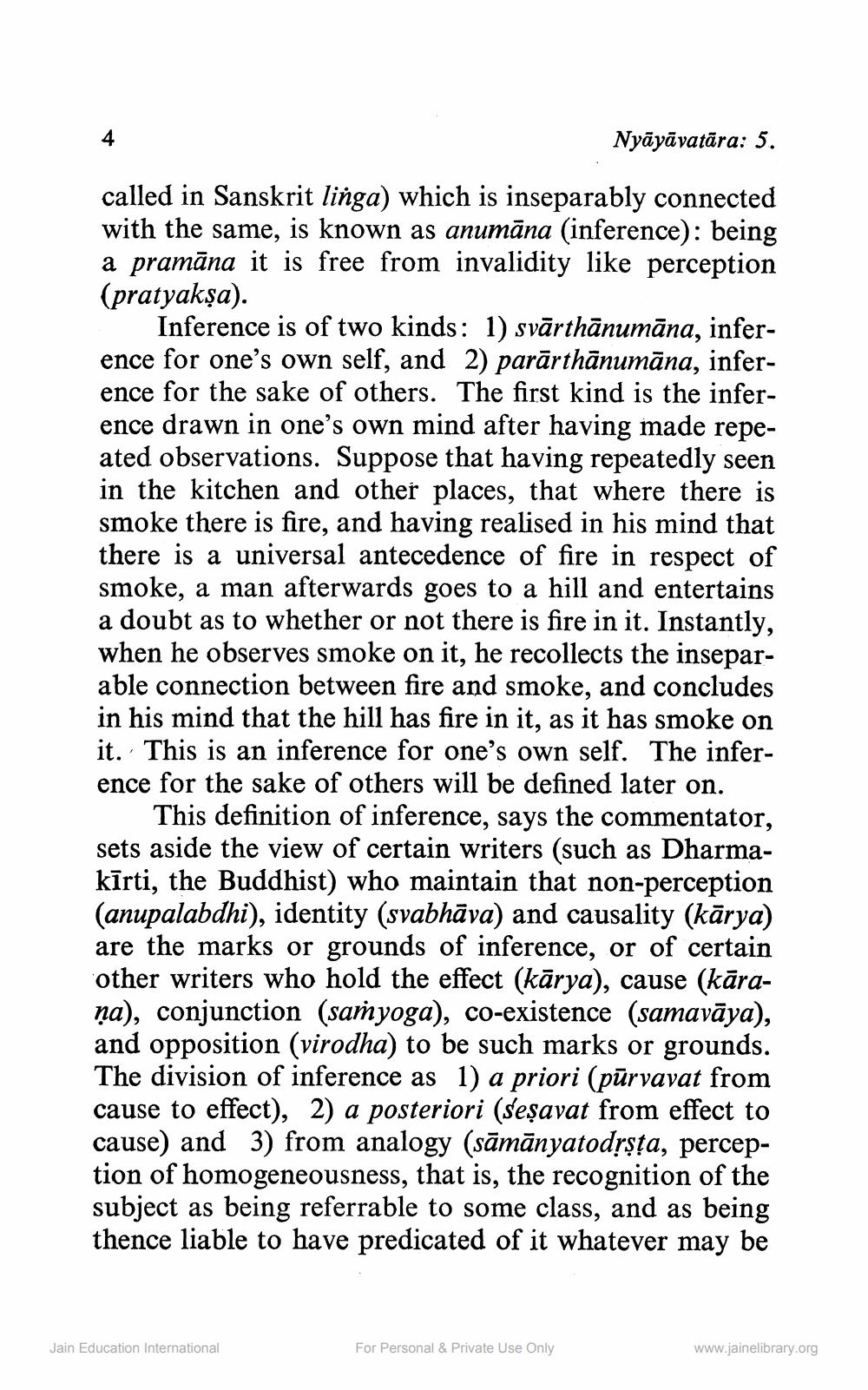________________
Nyāyāvatāra: 5.
called in Sanskrit linga) which is inseparably connected with the same, is known as anumāna (inference): being a pramāna it is free from invalidity like perception (pratyakşa).
Inference is of two kinds: 1) svārthānumāna, inference for one's own self, and 2) parārthānumāna, inference for the sake of others. The first kind is the inference drawn in one's own mind after having made repeated observations. Suppose that having repeatedly seen in the kitchen and other places, that where there is smoke there is fire, and having realised in his mind that there is a universal antecedence of fire in respect of smoke, a man afterwards goes to a hill and entertains a doubt as to whether or not there is fire in it. Instantly, when he observes smoke on it, he recollects the inseparable connection between fire and smoke, and concludes in his mind that the hill has fire in it, as it has smoke on it. This is an inference for one's own self. The inference for the sake of others will be defined later on.
This definition of inference, says the commentator, sets aside the view of certain writers (such as Dharmakīrti, the Buddhist) who maintain that non-perception (anupalabdhi), identity (svabhāva) and causality (kārya) are the marks or grounds of inference, or of certain other writers who hold the effect (kārya), cause (kāraņa), conjunction (saṁyoga), co-existence (samavāya), and opposition (virodha) to be such marks or grounds. The division of inference as 1) a priori (pūrvavat from cause to effect), 2) a posteriori (seşavat from effect to cause) and 3) from analogy (sāmānyatodụşța, perception of homogeneousness, that is, the recognition of the subject as being referrable to some class, and as being thence liable to have predicated of it whatever may be
Jain Education International
For Personal & Private Use Only
www.jainelibrary.org




